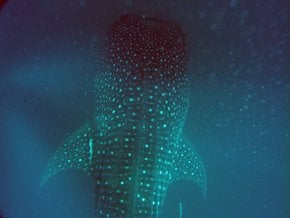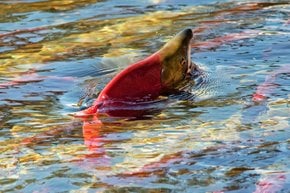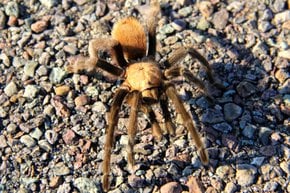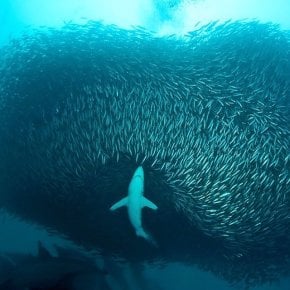Blacktip and Spinner Sharks Migration in Florida 2026
Tens of thousands of black shark fins just a few meters from the beach can scare the hell out of anyone
Best time: December–March
Visitors to Florida's Atlantic coastline should remain alert as fall transitions into winter when a significant migration of sharks occurs. During this time, the waters off Florida's east coast become densely populated with blacktip and spinner sharks, which move south in search of warmer water and food. In some years, the migration can bring up to 15,000 of these sharks to South Florida.
Migrating Season
The migration of blacktip and spinner sharks begins in early winter, typically in December and January. It peaks around late January and continues through February into March. During this period, large schools of sharks, numbering in the thousands, can be observed off the Florida coastline. They remain in Florida until April when they start their migration back north.
Why Sharks Migrate?
The dense pods of sharks frequently spotted off Florida's shores are part of an annual migration, where these predators head south to their winter feeding grounds. Researchers are still uncertain about the precise reasons behind these migrations. The sharks may migrate for mating or giving birth, but they might also be following their prey, which migrates as well, or simply seeking warmer waters. In the spring, the sharks leave Florida and travel up the coast to Georgia and the Carolinas, where mating occurs and females give birth during the summer. By late summer, many of these sharks migrate as far north as Long Island, New York.
Where Can You Witness Blacktip and Spinner Sharks Migration?
The most popular places to observe flocks of Blacktip and Spinner Sharks include Palm Beach, Miami Beach, Singer Island, and Jupiter Inlet. While these locations are not ideal for a casual swimming weekend, they offer an exceptional experience for wildlife enthusiasts. However, recent research by Florida Atlantic University indicates that the migration of these sharks to South Florida has significantly decreased. Warmer coastal waters have led more sharks to remain in Central Florida, North Florida, and as far north as the Carolinas. These areas, with their cloudier waters and abundant bait fish, have increased the likelihood of shark encounters, placing more people at risk of bites.
Blacktip and Spinner Sharks Difference
Spinner sharks are often mistaken for blacktip sharks (Carcharhinus limbatus) due to their similar appearance, but there are key differences between the two species. Spinner sharks grow larger than blacktips and have a distinct black tip on the anal fin in adults, a feature absent in blacktip sharks. Additionally, blacktip sharks typically display a more pronounced contrast in skin color compared to spinner sharks. Both species are known for their impressive aerial displays, leaping out of the water and spinning in search of smaller fish. These congregations of blacktips and spinners also attract large hammerheads and bull sharks, which follow them as a primary food source.
Safety Tips
While it's impossible to guarantee that attacks won't occur, it's important to note that shark attacks have happened in the past. Blacktip sharks often come very close to shore, seeking refuge in shallow waters from larger predators like hammerhead sharks. These larger predators sometimes follow blacktips into the coastline, increasing the risk for swimmers and holidaymakers. The presence of these sharks in shallow waters makes it crucial for beachgoers to remain vigilant.
Shark Sightseeing & Diving Tours in Florida
Shark Viewing Trips are perfect for families and groups who want to experience sharks in their natural habitat without getting in the water or spending an entire day on the boat. These excursions offer close encounters with Florida's sharks from the comfort of well-equipped vessels. With over 15 shark species inhabiting Florida’s waters, each trip promises a unique adventure. Prices for these trips range from $95 to $169.
Other Marine Animals to Spot
During the migration of blacktip and spinner sharks, visitors to the Florida coastline can also observe a variety of other marine animals, including sea turtles and dolphins. Additionally, larger predators, such as hammerhead sharks, are often seen following the migration of these smaller sharks as they prey on them. This period offers a unique opportunity to witness a diverse range of marine life in action.












































































